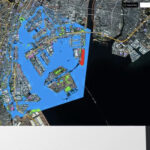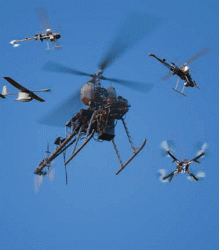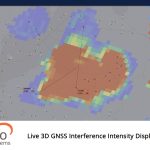The Defense Innovation Unit (DIU) of the Department of Defense (DoD) sought in mid-August commercial solutions to counter growing GNSS spoofing operations. The solicitation, closed on August 23, specified leveraging machine-driven analytics and datasets derived from publicly/commercially available information (PAI/CAI) to provide a situational awareness capability for intentional GNSS disruptions. The solicitation was particularly focused on persistent, large-area coverage of falsified GNSS emitters that result in localized spoofing phenomenology.
The project was entitled “HARMONIOUS ROOK — Situational Awareness for Intentional Disruption of Global Navigation Satellite System (GNSS) Users.”
GPS/GNSS architectures, central to critical infrastructure, and its users are vulnerable to denial and manipulation by adversarial actors. To date, intentional manipulation of GNSS operations have enabled nefarious activities, to include narcotics trafficking, unapproved operation of autonomous vehicles, illegal fishing, and sea-borne piracy.
In one example, positions from a U.S. Navy destroyer USS Roosevelt (pictured above, courtesy U.S. Navy), appeared four nautical miles within Russian territorial waters near Kaliningrad. While not illegal, entry by a U.S. warship into Russian territorial waters would likely have provoked a reaction and at the very least adverse news coverage, if not a major international confrontation.
Additionally, nation-state use of GNSS jamming or spoofing systems may extend beyond the area of conflict, causing deleterious effects on civilian populations. Such activities degrade or deny critical geolocation capabilities and further introduce hazards to safety-of-life-navigation, critical infrastructure, and emergency response services.
Competitive proposals were to address as many of the following capabilities as possible. The DUI is open to considering solutions that cover a subset or the entirety of interest areas listed below.
- Commercially available data sources: Collect, provide, and/or ingest various types of relevant data necessary for subsequent persistent GNSS interference analysis. Data types include, but are not limited to: automatic identification system (AIS), automatic dependent surveillance-broadcast (ADS-B), cellular phones, satellite phones, app-based GNSS metadata, and GNSS receivers. There is no preference to the source of the datasets (e.g. space-based or terrestrial)–only its utility and efficiency in relation to the subsequent analytic models and tools.
- GNSS interference analytics: Provide automatic screening, pattern recognition, and cueing of CAI data sources and available databases (a) for known GNSS interference observables and related sources, (b) identify GNSS observables that are not currently associated with GNSS interference, (c) improve and optimize CAI data source selection based on targeted-GNSS interference data, (d) identify new GNSS interference events, and (e) predict future behaviors based on historical records, if possible.
- Output Schema: data should be output in common, open formats (i.e. non-proprietary), supporting both real-time and historical detection using visualization tools and in-depth, real-time, and historical GNSS interference event analysis. Prototype output is envisioned to provide:
- A near-real-time, common operating picture for stakeholders and safety-of-life operations.
- Event identification and analysis
- Automated alerting for new events once manifestations are mature.






